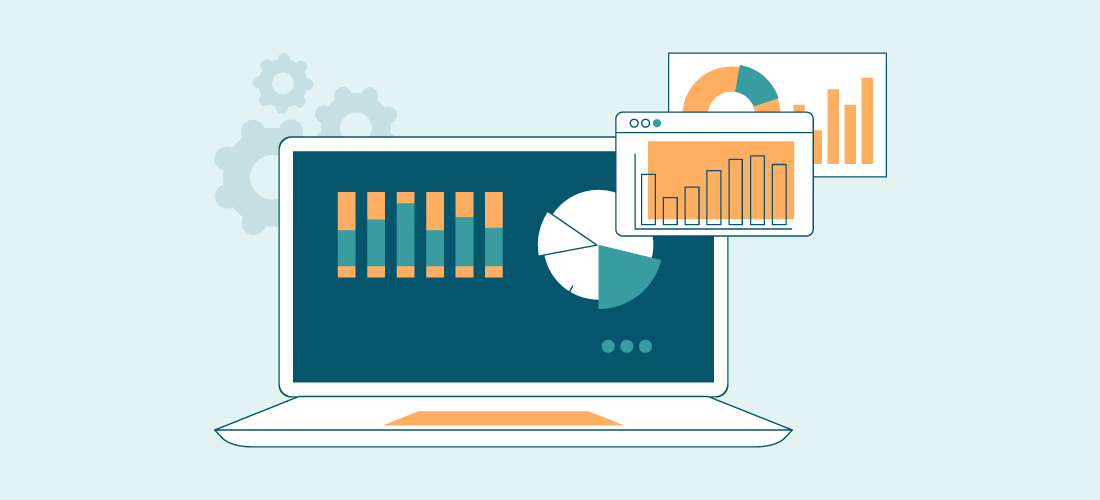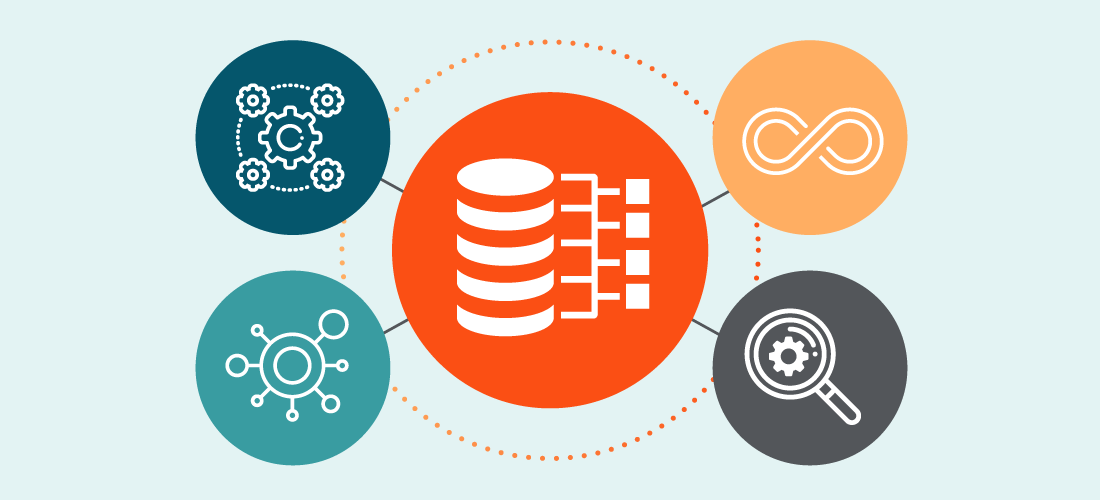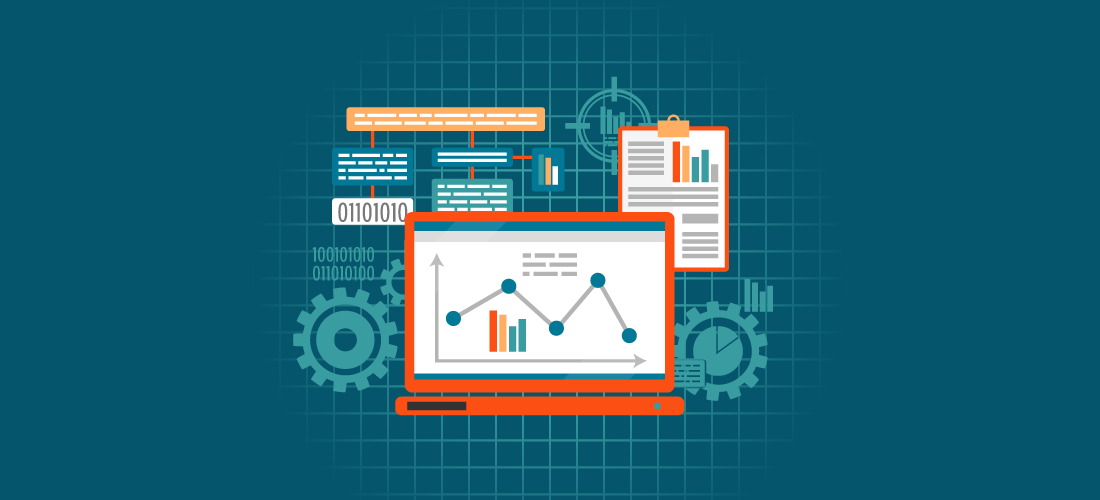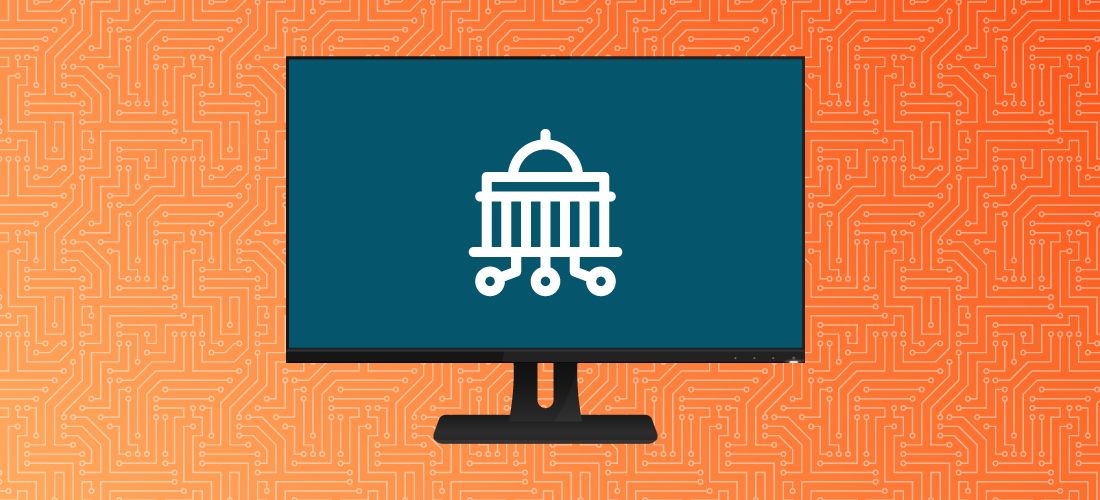
Chances are, outdated and siloed data infrastructures and architectures are restricting organizational growth and agility. Most legacy systems are not compatible with modern systems and use cases meaning the flexibility required to meet evolving customer needs and address competitive challenges is likely severely limited. Getting an organization to the point where infrastructure, tools and practices are optimized can be a challenge. However, embracing data modernization initiatives is necessary for organizations to thrive.
What is data modernization and why is it important?
Data modernization is the effort to enhance decision making and drive innovation and growth by improving your company’s data infrastructure, systems and processes. These initiatives typically include projects like migrating data from outdated systems to current platforms, implementing new data management methods and technologies, and strengthening data quality and governance. Data modernization is a crucial element in how businesses can better use their data assets to improve efficiency, create value and stay competitive in an ever-evolving marketplace.
What are the benefits of data modernization?
Data modernization empowers organizations to maximize the true potential of their data, enhance decision making and drive business success. It does this by enhancing visibility, increasing efficiency and accelerating the time to value of your data.
Enhanced visibility
The old way of doing things was for IT to own and control who could access data, blocking business users. This method can make it harder to grow and scale. A smarter way of doing things focuses on empowering data users by letting them directly access data through self-service and discoverability features. To ensure control and lower risks while encouraging creativity, innovation and faster value creation, this shift needs a strong base in data governance and definition.
Greater efficiency
In every part of a data pipeline, data transparency is very important. Data engineers and analysts should be able to see where the data came from, how it was changed, how it was calculated and what rules were used. When data lineage is clear, problems can be found and fixed quickly anywhere in the data flow. And with efficiencies comes data management cost optimization that results from streamlined infrastructure, processes and operations.
Faster time to value of data
Data is an important tool for businesses because it helps to evaluate success, make smart choices and spark new ideas. Knowledge and instincts alone are no longer enough. To improve organizational effectiveness, both operational and strategic, businesses need well-organized data, and teams who know how to use it. Without stable data practices, businesses risk basing their decisions on data that isn’t reliable or is misunderstood. This can cause wasted cycles and could lead to privacy breaches or false representations of business opportunities. Modern data management controls are necessary to make sure that findings are correct, safe and useful.
Considerations when planning for data modernization
When planning a data modernization, several critical issues need to be taken into account. Let’s explore three key considerations.
Legacy technology
Legacy systems have been in operation for many years, if not decades, using outdated technology. Some of these systems are still crucial for businesses. Organizations will have to evaluate the full scale of their legacy systems.
Culture
It might not matter how hard you try to modernize your data if the culture of your business is against it. When stakeholders believe “if it ain’t broke, don’t fix it,” it will be hard to get data modernization initiatives in motion. You may have to keep selling it internally because not everyone knows what’s broken or how bad the data architecture is.
Costs and benefits
When you weigh the costs and risks of data modernization, pay attention to how the investment will help the company thrive. For instance, though data modernization may cost in the short term, the long term benefits of revenue, security and compliance lead to happier customers, lower maintenance costs, more flexibility and the ability to grow the business.
How are data governance and data quality related to data modernization?
Any data-related investments or modernization initiatives must first ensure data quality and proper data governance. Compliance with rules and defense against cyber threats are part of data governance’s responsibilities in reducing risks to privacy, security and data protection. Knowing the physical location of data, the types of data that are vulnerable and the internal and external factors that might cause vulnerabilities are all part of this process.
The second part is to ensure the quality of the data. This starts with setting quality standards, keeping track of data quality scores and constantly checking to see if they are going up or down. It means making users more aware of the quality of data sources and giving decision-makers the tools they need to think about data quality when they use it. This way of doing things keeps you from using bad data in analytics and from making choices based on wrong or missing data.
Essential elements of a data modernization strategy
Use them as a framework to help you develop your own business case and plan.
Leadership commitment and accountability
Without support from your top leaders, it can be hard to get everyone to see how important it is to modernize data. For a data-first culture to grow, your C-suite must support data modernization and take an active role in driving it. Because they are the ones who have the final say, they have a reason to ensure they are making organizational strategy decisions based on high-quality data.
Defined outcomes
When starting data-related initiatives, it’s important to be clear about the use cases and business results you want. To do this, the organization needs to document what it wants to achieve, why it is putting money into data efforts and what benefits it expects. The main goal is to make sure that high-quality data is easy for data consumers to find and use for gaining insights that help the company. Making decisions is easier when you narrow your focus to a handful of critical use cases and business goals.
Evaluation of existing people, process and technology
Obviously, evaluating your existing systems thoroughly is essential to formulating your data modernization strategy but don’t neglect to also assess all the roles, business processes and practices related to those systems. Here’s some pointers for performing your evaluations.
Gap analysis
Assessing the current state of data is essential in understanding what assets are available and how they contribute to achieving desired outcomes. It involves identifying strengths and weaknesses in existing data resources and recognizing areas that need improvement. This assessment helps determine what is missing and what actions are necessary to advance to the next level of data maturity and effectiveness.
Governance
Organizations rely on data governance to help them strike a balance between minimizing risk and capitalizing on opportunities. Although many begin by concentrating on compliance, good data governance extends beyond just following regulations. It entails putting in place safeguards while simultaneously removing needless barriers to data consumption.
Incorporating data governance early on is critical for IT managers aiming to update data infrastructure and make data accessible to everyone. It ensures that initiatives such as data meshes, data fabrics and data lakes are sustainable and contribute significantly to return on investment (ROI).
Data quality
Moving to a new data architecture doesn’t automatically resolve data quality challenges. Before modernizing, it’s essential to evaluate the current data’s cleanliness, governance and suitability for migration. Focusing solely on present challenges without considering scalability and future requirements can lead to unforeseen complications in a modernized data environment.
Businesses prioritize general and directional quality metrics to assess data quality trends, improvements, consistency and areas for enhancement. These metrics inform decisions such as implementing more controls, validating data processes and addressing data quality issues promptly. Defining specific data quality aspects is crucial for establishing relevant metrics; for instance, understanding lead quality requires defining what constitutes quality leads.
Data quality issues can lead to the creation of data silos, potentially exacerbating existing problems.
Skills and training
A scarcity of skills presents a significant challenge when aiming for a return on investment (ROI) in data modernization. Finding the right talent to drive data transformation is a delicate balancing act.
Within your organization, you may have engineers and database administrators with invaluable tribal knowledge about your business. However, they may not be fully equipped with education and training to handle the full scale of a modernization project.
On the other hand, you might know where to find skilled individuals capable of implementing the necessary architecture and wielding cutting-edge technologies. Yet, these sought-after experts are often expensive and in-demand.
Addressing the talent gap requires thoughtful strategies to upskill existing personnel and attract external experts, ensuring that both tribal knowledge and cutting-edge skills contribute to successful data transformation initiatives.
Creativity and flexibility
Organizations need to think creatively when assessing their current data and tools since some of it might be incomplete, not in an ideal format or challenging to modernize. Avoid being inflexible; being rigid in transitioning to a new data architecture without ongoing scrutiny is detrimental. Stay ready to continually question and make adjustments. Ensure that the architecture you choose is flexible and adaptable as there will be ongoing smaller changes and refinements over time.
An implementation roadmap
A well-designed roadmap for data modernization is essential for organizations to methodically plan and implement changes to their data infrastructure. The following roadmap components will assist in aligning technical advancements with business objectives, optimize resource utilization and ensure a smooth transition to a more efficient and effective data management system.
Plan for data integration and interoperability
When it comes to data integration, critical decisions need to be made. You must determine the most suitable methods for collecting, combining and managing data from diverse sources and systems. Consider options such as data pipelines, ETL processes, APIs and data virtualization. Additionally, weigh the need for real-time versus batch processing, and ensure seamless compatibility across various platforms and applications.
Choose appropriate data management solutions
When selecting data management technologies, consider your specific requirements. You have various options and there is no “one-size-fits-all solution. Many DBMS options exist including relational, NoSQL and NewSQL databases, data lakes and data warehouses. While it is important to use the right technology for the immediate use case, you also need to evaluate the best fit for the broader flow of data to downstream strategic uses cases. Where does open source make sense? While making your choices, evaluate factors such as scalability, data retrieval speed, performance, cost-effectiveness, inter-connectivity and data governance capabilities.
Implement a data governance framework
Set up a strong data governance structure to ensure data quality, uniformity and adherence to regulations throughout the organization. Define policies for data ownership, data stewardship and data management. Utilize data governance tools and procedures to oversee data quality, uphold data standards, handle metadata and ensure data security and privacy. Deploy AI and ML technologies to bring observability into you data landscape and optimize the curation of “data products” for more efficient and effective consumption of data across your organization.
Data security and privacy
In today’s data infrastructures, prioritizing data security and privacy is crucial. Implement appropriate security measures such as encryption, access controls and user authentication to protect sensitive data from unauthorized access. Additionally, ensure compliance with relevant data privacy regulations and ensure that data usage aligns with ethical and legal standards.
Enable data analytics and insights
When it comes to analyzing, reporting and visualizing data, consider employing a variety of tools and technologies. These may encompass business intelligence (BI) platforms, data visualization tools, data mining techniques and advanced analytics algorithms including AI/ML. Customize your analytics capabilities to align with the specific needs of various stakeholders in your organization, including executives, data analysts and data scientists.
Embrace cloud and modern infrastructure
To enhance scalability, flexibility and cost-efficiency, consider leveraging cloud and modern infrastructure technologies. Cloud platforms provide storage, processing power and advanced analytics capabilities, allowing you to concentrate on insights rather than infrastructure management. When making decisions, evaluate various aspects, including cloud providers, hybrid cloud architectures and serverless computing options, tailored to your specific requirements.
Implement data pipelines and automation
Create efficient data pipelines to automate the processes of data ingestion, integration and transformation. Employ tools such as Apache Kafka, Apache Airflow and customized solutions to manage data flows and automate repetitive tasks. This automation reduces manual effort, improves data quality and enables real-time data processing. Regular and consistent communication of progress and results Demonstrate gradual progress by sharing outcomes, both positive and negative. Transparent reporting ensures that stakeholders are not caught off guard or form misconceptions about the progress being made.
AI and data modernization
AI often is a black box: users input data and an algorithm produces results. While users may have some knowledge of the underlying data, it remains limited. The goal is to transform this black box into a glass box, where users understand, and trust predictions based on the data. Larger clients are adopting AI best practices by establishing AI centers of excellence to holistically track, measure and monitor their AI initiatives.
Data quality plays a pivotal role. This is especially critical in data pipelines, where poor data can flow from one department’s AI model to another. To successfully implement an AI governance framework, organizations must focus on three key components:
Data lineage
Understand where the training came from and how it may have changed along that journey.
Data scoring
Evaluate data quality based on profiling results and user rankings. Scoring reflects the effectiveness of data governance and detects data drift.
Data sharing
Once good data is identified, make it accessible to other users through data marketplace tools, enabling analysis and comparison of high-value datasets and AI models.
Data modernization mistakes to avoid
You can gain valuable insights by studying the mistakes made by others during data modernization. Here’s some missteps we’ve seen others make that we hope will enable you to avoid making the same mistakes.
Running straight to technology
While tools and vendors are valuable assets in data modernization efforts, they do not offer a magical solution to all issues. These tools cannot fully grasp the intricacies of your business, data challenges or data quality measures. The principle of “garbage in, garbage out” still applies. Integrating new tools into existing tech stacks poses challenges and may reveal unforeseen issues, especially without adequate training for teams. It’s essential to adopt tools that align with business strategy to avoid missed opportunities.
Not having a holistic view and not driving toward measurable business outcomes
Mistakes in data modernization initiatives often occur when they are not closely aligned with broader strategic objectives of the organization. It’s critical to recognize that the advantages of data modernization go beyond mere operational enhancements such as improved data access and reporting speed. Instead, it should be viewed as a comprehensive facilitator for transforming the entire organization into a more data-driven entity. To avoid these mistakes, prioritize showing the benefits of democratization of data and empower frontline staff with relevant information, thereby ensuring that data modernization contributes significantly to the organization’s overall success and risk management strategies.
Approaching data governance as a project instead of a practice
It would be a significant mistake to view the related data governance aspect of the modernization as a one-time project rather than an ongoing practice with lasting benefits. By adhering to best practices consistently, organizations can create a valuable and adaptive aspect of their operations. As data sources expand beyond internal systems to include diverse external ones, strong governance becomes essential for organizing, accessing and ensuring the reliability of data, ultimately empowering teams for successful outcomes.
Missing the role of culture in data modernization
Avoid common pitfalls in promoting a data-driven culture by ensuring comprehensive data literacy among employees, offering training on data analytics tools and promoting collaboration between business users and data experts. Create an environment that values and actively applies data-driven insights in decision-making, fostering a mindset that places a high priority on leveraging data for achieving success.
Conclusion
Data modernization is vital for organizations seeking to unlock the full potential of their data. Remember that this journey is ongoing and will require continual adjustments to align with evolving business demands. Despite challenges, there are ways to tailor a modern architecture to your specific needs, resulting in better data utilization, insights and a competitive edge.



